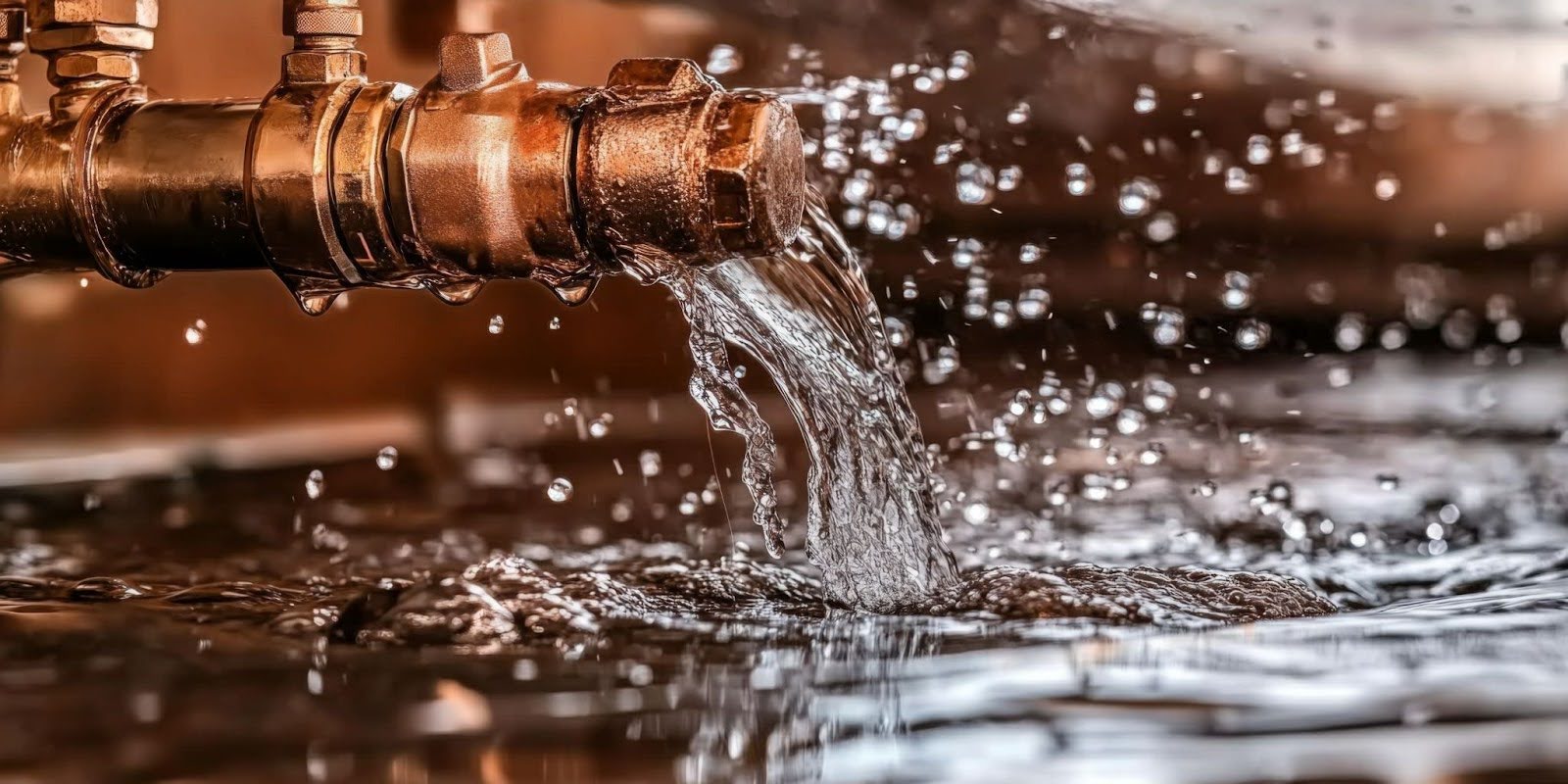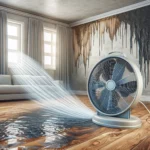Many property owners consider a water leak a minor inconvenience and nothing more – but that would be a mistake. Water leaks are a problem that can escalate into something major if left ignored.
The causes are wide-ranging, from common burst pipes and leaky roofs to overflowing appliances and faulty plumbing. Regardless of the severity, prompt action is usually wise. Knowing who to call for water leak repair can make all the difference.
The faster you act, the less damage your home will sustain. This guide will take you through the immediate actions and considerations, including how to find water leak professionals and what to expect from emergency services.
But first, we need to address your immediate steps.
Immediate Actions to Take Before Help Arrives
The first few minutes after discovering a leak are the most important. Relatively harmlessly dripping water pipe leaks may not always warrant finding water leak professionals right away – but if water is actively pouring into your home, follow these steps immediately to reduce the damage:
1. Shut Off the Water Supply
Your first priority is stopping the water at its source. If the leak is coming from a broken pipe, locate your home’s main shut-off valve (usually found near the water meter or where the main line enters your home) and turn it off. If the leak is appliance-related, shutting off the water supply to that fixture may be enough.
2. Cut the Power if Necessary
At the risk of stating something obvious, water and electricity are a dangerous mix. If water has reached electrical outlets, wiring, or appliances, you must switch off power at the breaker panel before stepping into the saturated area.
If shutting off the power requires walking through standing water, call an electrician or emergency water damage services for guidance.
3. Move Valuables Out of Harm’s Way
Furniture, electronics, and personal items can suffer irreparable damage in a water leak situation. Move smaller items to a dry area and use plastic sheeting to protect anything that can’t be moved.
If the leak is in the basement, try elevating all furniture on cinder blocks or placing waterproof barriers underneath. Be careful, and try not to injure yourself – protecting furniture is a priority, but not at the expense of your back.
4. Contain the Water
Use towels, mops, or buckets to soak up the standing water. For larger leaks, a wet-dry vacuum can help remove excess moisture. If water is seeping through the ceiling, place a bucket underneath the drip and puncture the ceiling’s lowest point to relieve pressure and prevent a total collapse.
Again, be careful. If the ceiling is already quite water-logged, there is a reasonable chance of collapse while you are standing underneath. If you do not feel confident, finding water leak professionals or building contractors would be a wise move.
Who to Call for Water Leak Repair?
Once you have the situation fully under control, it’s time to call in the emergency water damage services. The problem for many is that finding water leak professionals isn’t always a simple endeavor. Different types of water leaks and water damage at home require different types of experts. To that end, here’s who to contact based on your specific problem:
Plumbers
A licensed plumber is your best bet for leaks related to pipes, appliances, or household fixtures. They can repair burst pipes, faulty water heaters, and leaking toilets, hopefully preventing further issues fairly promptly.
Roofing Contractors
If your leak is coming from the ceiling or attic, you almost certainly have a damaged roof (unless your water tank is stored in the attic). Roofing contractors can inspect for missing shingles, clogged gutters, or general structural damage that’s allowing water to enter.
Water Damage Restoration Services
When a leak leads to extensive flooding, you will probably need emergency water damage services to dry out your home. Specialists such as WetReset use fans, moisture meters, and industrial-grade dehumidifiers to remove water from your home and prevent potentially dangerous mold growth and structural weakening.
HVAC Technicians
Leaks near your furnace, air conditioning unit, or water heater could be due to a malfunction in your HVAC system. A good technician can inspect your unit and fix any issues before they cause major water damage.
Foundation Repair Experts
If water is seeping through basement walls or pooling around your foundation, it could indicate a drainage problem. A foundation repair expert can assess the situation and recommend solutions such as waterproofing or maybe a sump pump installation.
Finding Water Leak Professionals
If you are searching for emergency water damage services, you have plenty of options to consider. There is no shortage of contractors and specialists out there, but how do you know who to call for water leak repair, given the wide range of companies available?
The fact is, some water damage companies are far better than others. To ensure you are hiring a reliable water damage repair expert, follow these basic tips:
- Check Credentials: Always look for licensed and insured water damage professionals with experience in handling leaks.
- Read Reviews: Customer testimonials are a useful peek into a company’s reliability and response time.
- Ask About Emergency Availability: As you might imagine, water damage doesn’t wait for regular business hours, so look for a water damage company offering 24/7 services.
- Get an Estimate: Reputable and experienced companies will provide an approximate cost estimate before starting any water damage and leak repair work, helping you avoid unfair charges post-repair.
The Importance of Finding Good Water Leak Professionals
Some homeowners might attempt DIY fixes themselves, but without proper training and experience, this can often do far more harm than good. Knowing who to call for water leak repair depends on the general severity of the issue, but professional help is always recommended as it ensures:
- Proper diagnosis of the problem’s root cause
- Prevention of further damage
- Compliance with building codes and insurance requirements
- Faster, more effective restoration
Preventing Future Water Leaks
While some leaks happen out of the blue, many water leaks can be prevented with basic, routine maintenance. Here are a few sensible steps that should become a habit for any property owner:
- Inspect pipes and fixtures regularly: Look for signs of wear, corrosion, or minor leaks before they worsen.
- Maintain your roof and gutters: This will help prevent leaks caused by clogged drainage or missing shingles.
- Install water detection devices: They will alert you to leaks before they cause major damage.
- Keep an eye on your water bill: An unexpected increase is usually a firm sign of a hidden water leak.
Bottom Line
Don’t let that drip become a disaster. When you discover a water leak in the house, who to call becomes your most pressing question. Ultimately, prompt action is your best defense against thousands in repair costs and potential health hazards.
Finding water leak professionals with proven expertise will help protect your biggest investment. The right emergency water damage services can mean the difference between a quick fix and a complete renovation.
If you are facing a water leak at home, contact WetRest now for 24/7 emergency service. Our experienced team of professionals can quickly identify and solve your problems using cutting-edge detection equipment and proven restoration techniques that save you time and money.



